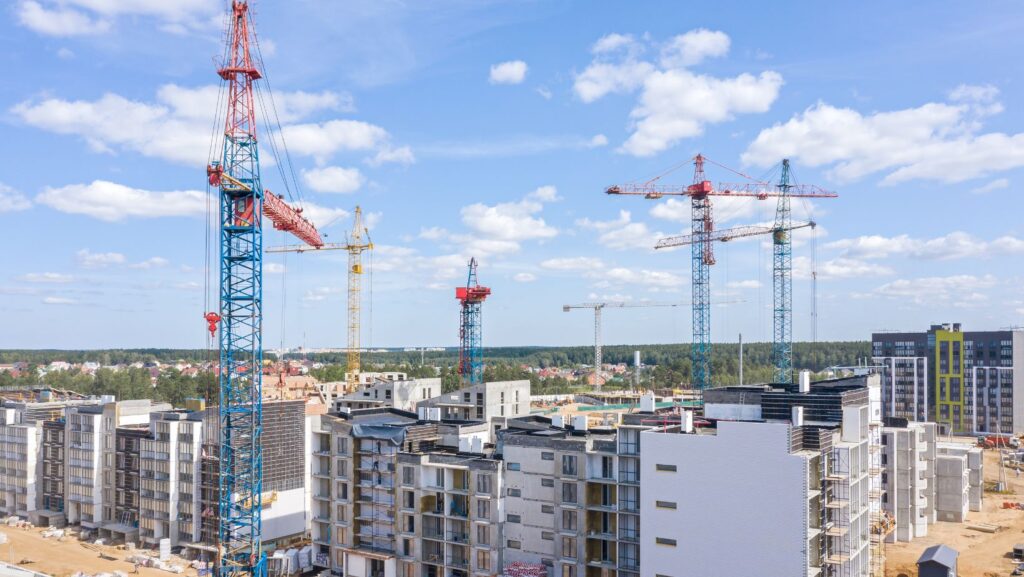A city is more than just a collection of buildings; it’s a dynamic, living ecosystem. For this ecosystem to thrive, it requires a sophisticated circulatory system that moves people, goods, and ideas efficiently. This is the role of infrastructure. From the water we drink to the energy that powers our homes, these networks are the foundation of modern life. Among the most critical of these is well-planned railway infrastructure, a powerful catalyst that shapes how our cities grow, function, and flourish for generations. It is the steel backbone that supports economic vitality, enhances community well-being, and paves the way for a sustainable future.
The Economic Engine of Connectivity
At its core, urban infrastructure is a powerful economic multiplier. When we build effective transport networks, we are essentially creating arteries for commerce. Businesses gain access to a wider talent pool, and workers can connect with more employment opportunities without the burden of long, difficult commutes. This enhanced connectivity attracts new investment, as companies are more likely to establish themselves in areas where logistics are streamlined and their workforce can travel easily. This, in turn, stimulates local economies, increases property values, and generates a ripple effect of job creation that extends far beyond the initial construction phase.
Enhancing Liveability and Community Well-being
Beyond the balance sheets, the true measure of a city’s success lies in the quality of life it offers its residents. Thoughtfully designed modern railway infrastructure plays a pivotal role in elevating this experience. By providing a reliable and efficient alternative to private vehicles, it helps to reduce traffic congestion, which directly translates to less time spent commuting and more time for family, leisure, and community activities. These transport corridors often become magnets for development, transforming stations into vibrant community hubs with shops, cafes, and public spaces, fostering a greater sense of local identity and connection among residents.
Fostering Sustainable Urban Environments
As our cities expand, so too does their environmental footprint. A strategic focus on public transport infrastructure is one of the most effective tools we have to guide this growth sustainably. Every person who chooses to take a train instead of a car contributes to a collective reduction in carbon emissions and air pollutants, leading to cleaner air and healthier communities. Well-integrated rail networks encourage denser, more walkable urban development, reducing the pressure for urban sprawl and preserving precious green spaces. This conscious approach to city planning ensures that our development today does not compromise the environmental health of tomorrow.
The Role of Digital Innovation in Modern Construction
The days of relying solely on paper blueprints for city-shaping projects are long gone. Today, digital innovation is at the heart of delivering complex infrastructure with greater precision, safety, and efficiency. Technologies like Building Information Modelling (BIM) allow engineers and project managers to create a detailed digital twin of an asset before any ground is broken. This enables meticulous planning, clash detection between different systems, and optimised construction sequencing, significantly reducing the risk of costly errors and delays. This digital-first approach ensures that modern infrastructure is not only built to last but is also delivered with maximum value and minimal disruption.
Overcoming the Challenges of Urban Infrastructure Projects
Executing large-scale infrastructure projects within a bustling urban landscape presents a unique set of challenges. Navigating the complexities of dense underground utilities, minimising disruption to residents and businesses, and managing unforeseen geological conditions requires immense expertise and careful planning. The key to success lies in a combination of technical ingenuity and genuine community partnership. Through transparent communication, stakeholder engagement, and the use of advanced construction techniques like autonomous tunnel boring machines, it is possible to deliver transformative projects while respecting the fabric of the existing community and environment.
Future-Proofing Our Cities for Generations to Come
Building infrastructure is an act of foresight. The rail lines, tunnels, and stations we construct today must serve not only our current population but also the generations that will follow. This means designing for future capacity, integrating adaptability for new technologies, and ensuring resilience against the impacts of climate change. Future-proofing involves selecting durable materials, designing systems that can be easily upgraded, and creating networks that can evolve with the city’s changing needs. It is a commitment to creating a lasting legacy of connectivity and opportunity, ensuring our cities remain vibrant and competitive on the world stage.
Building the Foundations for a Brighter Future
Ultimately, infrastructure is the physical manifestation of a city’s ambition. It is about more than just concrete, steel, and systems; it is about connecting people to opportunity, fostering vibrant communities, and building a more sustainable and equitable world. By prioritising intelligent, well-executed infrastructure projects, we are making a profound investment in our collective future. We are laying the groundwork for cities that are not only more prosperous and efficient but also more liveable, resilient, and inspiring places to call home.



More Stories
How Material Innovation Is Influencing Contemporary Design Objects
How Automation and Smart Tools Are Transforming Architectural Practice
Why Turnkey Sweepstakes Software Is Catching On Fast